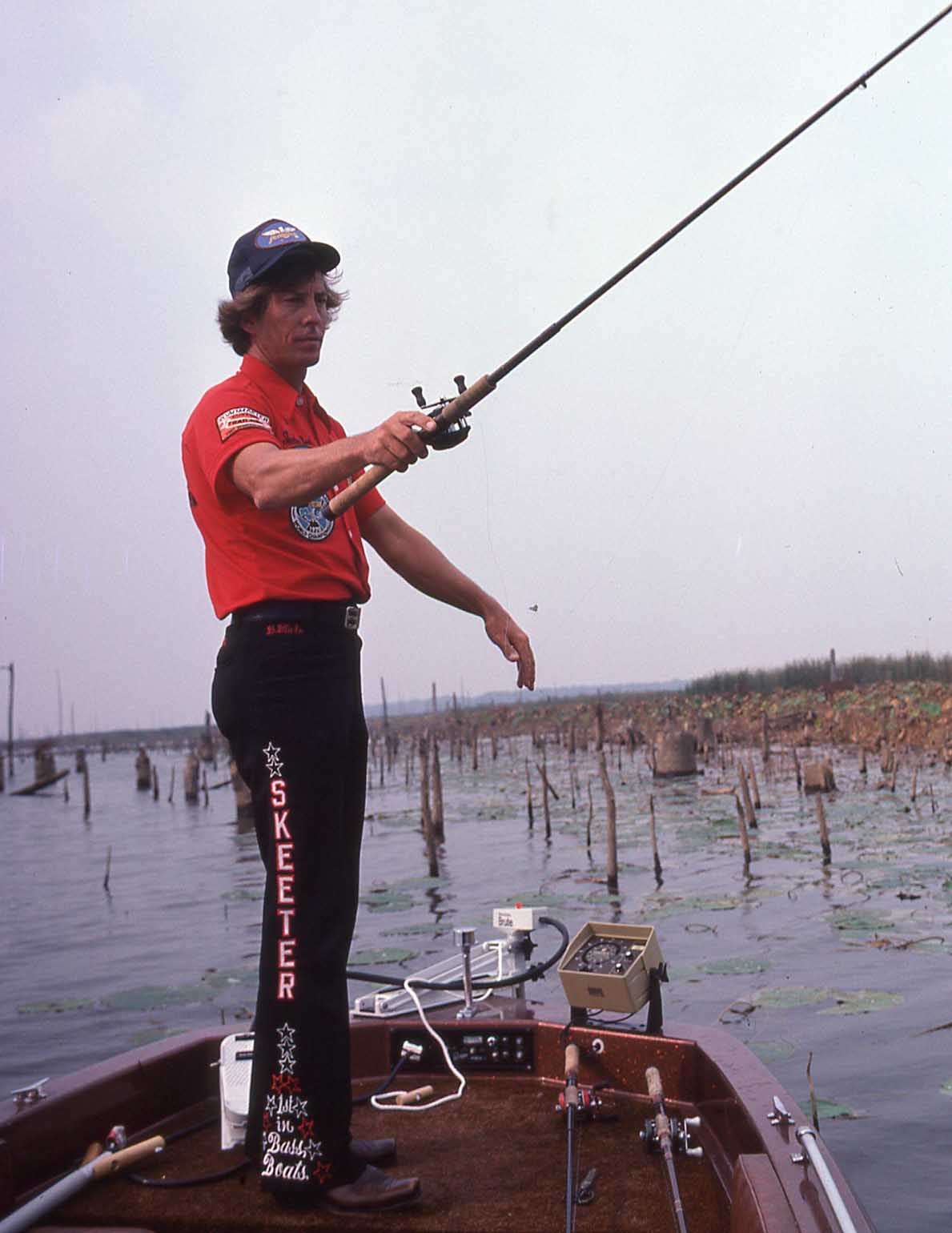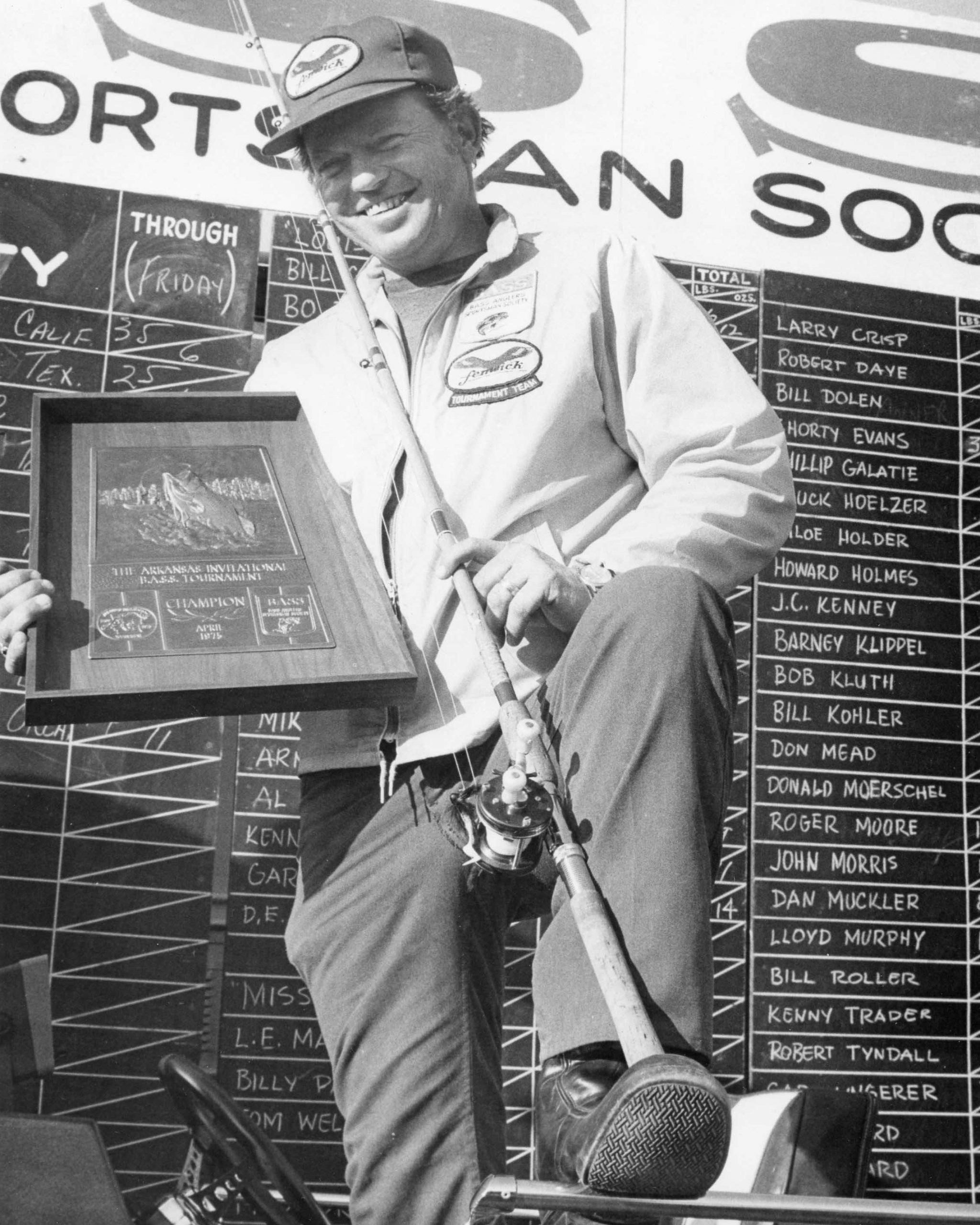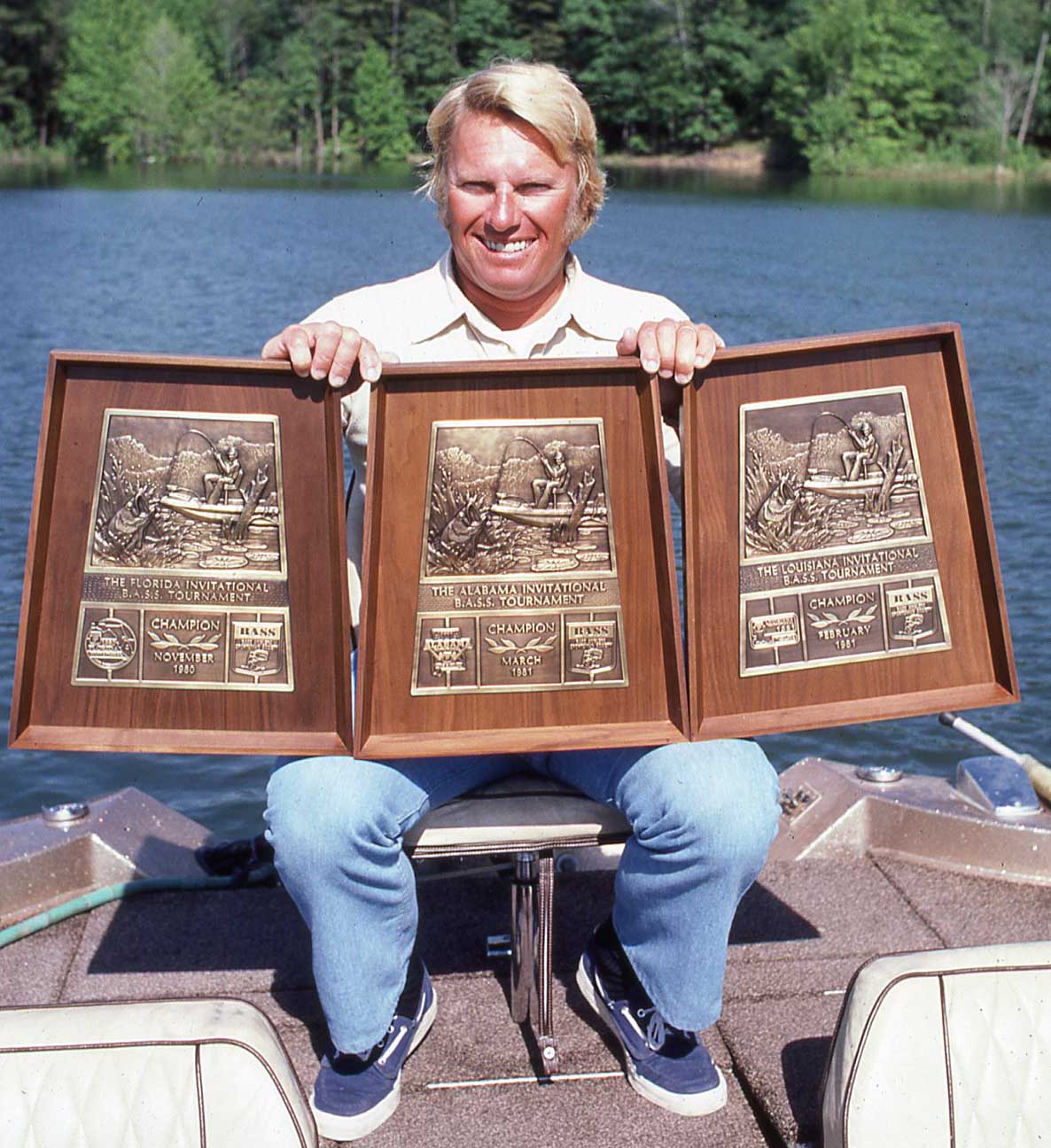
On January 28, 1977, Dave Gliebe of Stockton, Calif., won the American Bass Fisherman Hurst Open on Lake Okeechobee.
You may remember Gliebe as one of the original Bassmaster Elite Series anglers in 2006, but I remember him from much further back. In that inaugural Elite season, he was a 63-year-old pro returning to the highest level of national tournament fishing after a long layoff as a touring pro.
Gliebe had been a big name in the 1970s and early 1980s, winning a couple of B.A.S.S. events, qualifying for three Bassmaster Classics (1977-79) and impressing most everyone along the way. Nine-time Classic qualifier Basil Bacon once called Gliebe the only man who had ever impressed him with a rod and reel.
In the early ’70s, Gliebe was a protégé of Dee Thomas, the inventor of Flippin’. Back then, there were only a handful of practitioners (Elite pro Gary Klein was another student and friend of Thomas), and they dominated when conditions were right … which was pretty often.
Thomas was a grocer in Newark, Calif., who came east for a couple of B.A.S.S. events in 1975. At the Louisiana Invitational on Toledo Bend, he was solid but unspectacular. His second B.A.S.S. tournament was the Arkansas Invitational on Bull Shoals Lake, and that’s where he made his first mark on the national bass fishing scene.
Thomas won that event with his new technique, and Flippin’ was on the map. A series of features in Bassmaster Magazine spelled out the concepts behind the method and it began to take off, especially among tournament anglers. Fenwick began production on the “Flippin’ Stik” and published a brochure titled “The Whole Flippin’ Story.” Even today most bass anglers refer to the rod they use for flippin’ and pitching as a “flipping stick” and not a “flipping rod.”
In the 1970s, it was practically impossible for a tournament angler to earn a living. It’s one reason that so many big stars of the era got into television — Bill Dance, Roland Martin, Jimmy Houston, Hank Parker. Thomas wasn’t willing to risk his career and family by traveling the country in search of little green fish. He went back to California and continued to be a force in area tournaments until health issues slowed him down in the last decade.
Gliebe, however, was willing to take the plunge. He fished his first B.A.S.S. tournament in 1976 and also fished other circuits of the day, including the ABF. The Okeechobee event in 1977 was his first big national win and one of the most remarkable in competitive fishing history.

Using a Flippin’ Stik, heavy monofilament line and a 5/8-ounce black hair jig and trailer, Gliebe dropped his bait in hyacinth mats and reed patches along boat trails for the win.
He caught three daily 8-bass limits. After the first day, he held a slim 4-ounce lead. On the second day, he started to run away with it, taking a 22-pound advantage. He ended the tournament with 24 bass weighing 95 pounds, 3 ounces. That’s nearly a 4-pound average — impressive, but hardly jaw-dropping, especially for Florida, where big catches are expected.
What’s really remarkable is that his closest competitor had 52-10. Gliebe won by more than 42 pounds!
What makes it even more impressive is that the tournament runner-up — none other than the legendary Roland Martin — got there because he was paired with Gliebe on the first day, saw what he was doing and replicated it for himself. If he hadn’t, Gliebe’s margin of victory would have nearly doubled the second place weight.
Two things come to mind when I think about this tournament. The first is that this was before the pros (or anyone else) truly knew how to fish Florida’s heavy vegetation.
Yes, there were weedless baits, plastic worms, Johnson Silver Minnows, Weed Wings, Bill Plummer Super Frogs and the like. There were even golden shiners for live bait anglers. But before Flippin’, pitching and punching, there was no methodology for penetrating the dense cover that held winning strings of bass. Those fish were — for all practical purposes — inaccessible. They basically didn’t exist when they were under or in the midst of all that vegetation.
Gliebe helped to change that. He and Thomas (and later Klein and Martin) altered the way we thought about cover and presentation, rod length and action. It was a huge moment, and it built upon the legacy started by Thomas.

The Okeechobee win was the first of three in a row for Gliebe on three different tournament circuits. In early February he won the American Angler National Tournament on Sam Rayburn Reservoir in Texas, and in mid-February he won the B.A.S.S. Louisiana Invitational on Toledo Bend. Three national tournament wins in a month on the same rod, reel and bait — a Fenwick Flippin’ Stick, an Ambassadeur 5000D and that 5/8-ounce black hair jig with a plastic worm trailer.
In May, Bassmaster Magazine ran the first of its six-part series on Flippin’, “The Flippin’ System” by Thomas and Gliebe (as told to Dave Myers) and the concept could no longer be ignored by anyone interested in competing at the highest level. Flippin’ wasn’t a fad. It would soon become a staple and go-to method for bass anglers everywhere, who realized it was a philosophy and system — not just a technique or method.
The second thing I think of when I consider Gliebe’s performance at the 1977 Okeechobee event is his total domination. That he won by 42-9 is amazing. That he nearly doubled the weight of the next best angler is even more impressive, at least to me.
And that’s the subject of the next Bassonomics.





